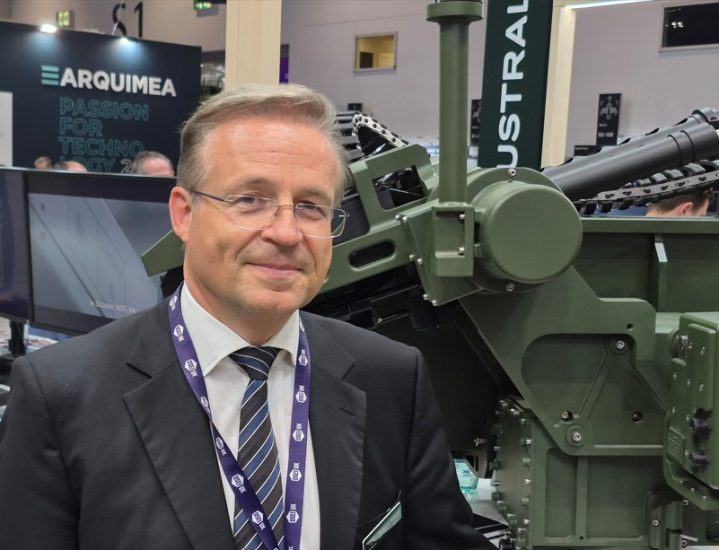Australian counter-UAS company Electro Optic Systems (EOS) came to DSEI 2025 with news of the first commercial sale of its 100 kW laser weapon. Dr Andreas Schwer, the company’s Chief Executive Officer, explains this is just the start of a new generation of more effective counter-drone swarm weapons
Why is the availability of a 100 kW C-UAS system so important?
In August EOS signed the world’s first contract for a 100kW laser C-UAS system which we believe is a big game-changer for the industry. It is designed to protect critical infrastructure such as air bases, power plants and other high-value assets from drone and drone-swarm attacks.
The system can engage up to 30 drones a minute, which is unachievable by any other laser system. We are optimising the system for a higher rate of engagement, and in testing we have recorded performance approaching one drone kill per second, including the time to identify and lock onto the next target. The underlying technology in detection, tracking and mechanical dynamics is complex but we have mastered it, and it is unique.
We have also started developing lower-power systems that can defeat small drones at range, primarily dazzling their sensors and causing the mission to abort.
Why do you need 100kW?
It shortens the time needed to engage a drone at range. With less power you need longer on the target. The goal is to minimise that time so you are ready for the next defeat. If you go down to 50 kW the number of engagements goes down by half.
Is the system operating today?
This is the first of its kind. We have a 36kW demonstrator based on the same fundamental technology we use to show to clients, and it will soon go into operation with a European NATO country.
How have you achieved this performance?
The origin of the technology is in the space domain. We have been a partner with the US government since the 1980s, collaborating on the strategic defence “Star Wars” initiative, where we developed technology to track objects over tens of thousands of kilometres. After the programme ended, we continued investing our money in the system, which is why we now have a leading position in tracking, atmospheric correction and high energy laser technology. We are the only laser weapon company worldwide that owns all the relevant IP. In most other laser weapon project the IP is shared among different companies, each providing niche capabilities. This makes those systems more expensive, complicated and difficult to industrialise for a third country, and it slows down the entire development process.
We also have a unique cooling system that allows continuous 24/7 operation without interruption. Other laser systems need to be switched off because over overheating. Not ours.
Is the system mobile or fixed?
The current system comes in a standardised container that can be mounted on a truck and moved around. It has been developed primarily to protect high-value infrastructure. A more compact version could be mounted on a smaller platform, but that is not a priority at the moment.
Typically, the system operates as part of an integrated, multi-layered C-UAS system. It receives the feed from the long-range surveillance radar, whatever type the customer has chosen, and through our command-and-control system the signal is passed to the laser-mapping detector. The electro-optical system then locks on to the target.
What will you be doing in five years’ time?
Our vision is to have a 300 kW laser weapon system in production, and our 100 kW weapon will be widely deployed around the world as a standard drone-mitigation system.
How do you see the drone challenge evolving over the next few months and years?
We have seen the trend change from large, expensive drones to small drones, and from single attacks to swarm attacks, but not yet with a high level of onboard intelligence. That will be the next step. Swarm-enabled drones will not need to be guided or pre-programmed; they will interact and change their attack mode depending on what the defenders do. This creates a high degree of complexity for the defence forces, so we need systems that can cope.
We therefore need to integrate AI capable of identifying these patterns. That will require a fully automated, robotic systems in which there is no place for a human-in-the loop. The larger the swarm, the more AI will be required to defeat it. And the faster they fly, the faster we must defeat them.
In the past the focus was on optimising range. It remains a priority, but the shift now is toward achieving as many kills as possible per minute. That is the future because of the swarm threat, which means more focus on agility rather than range.
And there’s an affordability battle, too.
The price of lasers is coming down. A 100 kW laser system costs around EUR40-50 million, but in quantity, say 100 units, the price can fall to less than EUR30 million, which is comparable to a Leopard 2 battle tank.




